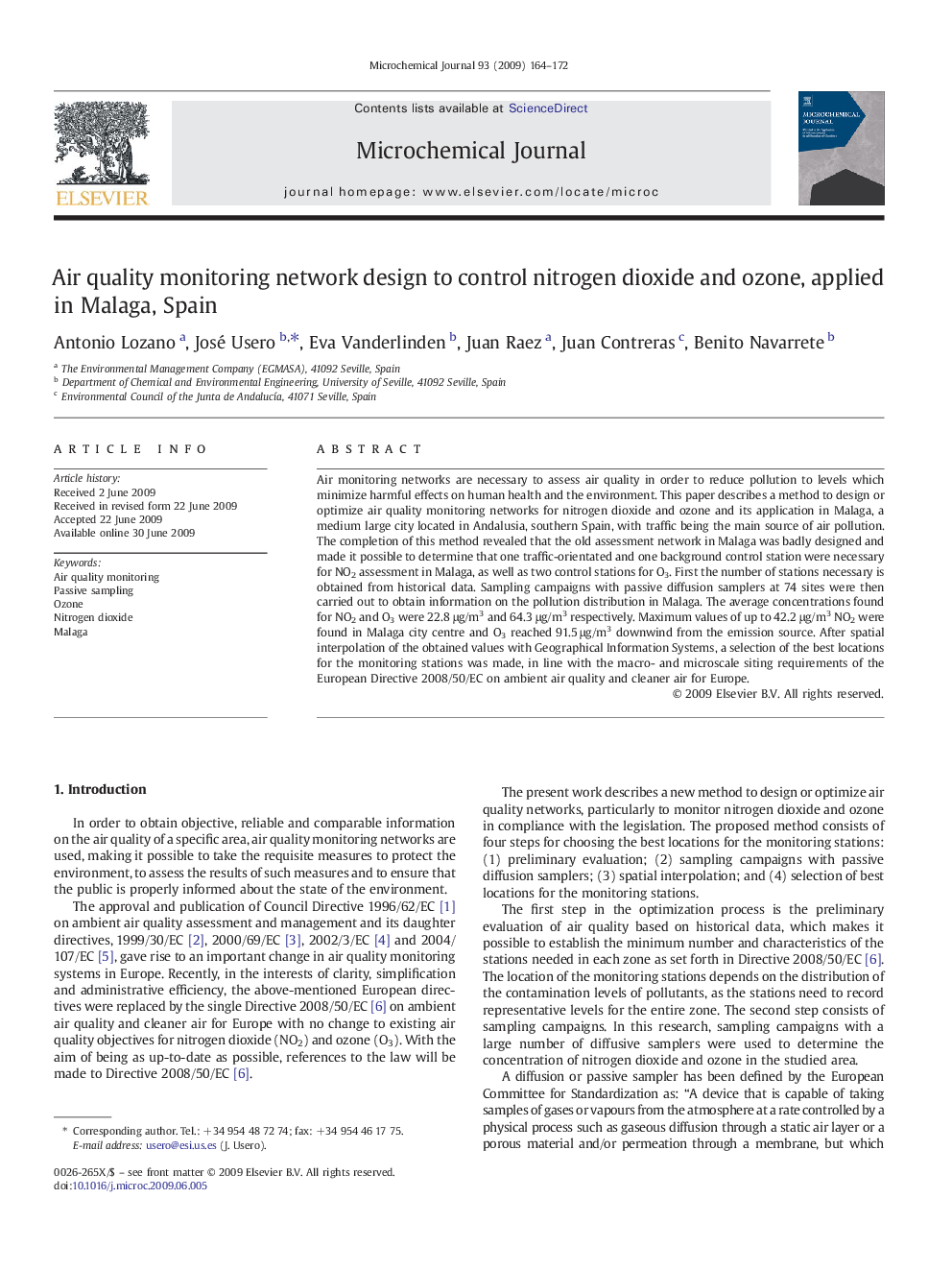| Article ID | Journal | Published Year | Pages | File Type |
|---|---|---|---|---|
| 1228060 | Microchemical Journal | 2009 | 9 Pages |
Air monitoring networks are necessary to assess air quality in order to reduce pollution to levels which minimize harmful effects on human health and the environment. This paper describes a method to design or optimize air quality monitoring networks for nitrogen dioxide and ozone and its application in Malaga, a medium large city located in Andalusia, southern Spain, with traffic being the main source of air pollution. The completion of this method revealed that the old assessment network in Malaga was badly designed and made it possible to determine that one traffic-orientated and one background control station were necessary for NO2 assessment in Malaga, as well as two control stations for O3. First the number of stations necessary is obtained from historical data. Sampling campaigns with passive diffusion samplers at 74 sites were then carried out to obtain information on the pollution distribution in Malaga. The average concentrations found for NO2 and O3 were 22.8 μg/m3 and 64.3 μg/m3 respectively. Maximum values of up to 42.2 μg/m3 NO2 were found in Malaga city centre and O3 reached 91.5 μg/m3 downwind from the emission source. After spatial interpolation of the obtained values with Geographical Information Systems, a selection of the best locations for the monitoring stations was made, in line with the macro- and microscale siting requirements of the European Directive 2008/50/EC on ambient air quality and cleaner air for Europe.
